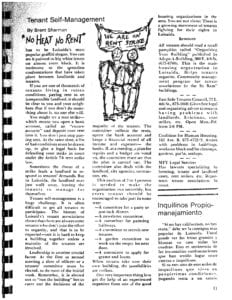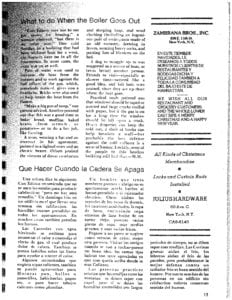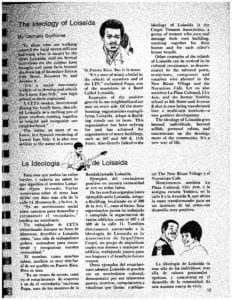Throughout my first two weeks here at the Loisaida Center, I have spent several hours poring over their archive of the monthly newsletter “The Quality of Life in Loisaida,” which ran from March, 1978 to December 1982. This newsletter, which was founded in part by the legendary Margaret Mead, contained essential tips, political updates, and profiles of noted community members. These newsletters serve as an incredible portal into the world of downtown New York, specifically the predominantly latinx Loisaida, in the late 70’s: a lethal housing crisis, a drug ravaged neighborhood, government neglect, and indomitable spirit.
“The Quality of Life in Loisaida” ran monthly, and served as an essential survival guide for the neighborhood. Printed in both English and Spanish, so as to properly serve the majority Puerto Rican audience, the topics addressed include, but are not limited to: proper nutrition tips (including articles regarding the benefits of a vegetarian diet,) how to winterize your home, profiles of local initiatives and activist organizations, ads for local services and businesses, health care service directories (and a comprehensive guide on how to reduce costs and maximize benefits,) recycling, adult education opportunities, CPR, loans, vaccines, nuclear energy, opportunities for the disabled, solar panels, the pros and cons of methadone, and community garden updates.
The three articles that stuck out to me the most, despite the wide range of the newsletter, were: “Tenant Self-Management,” a detailed description of how tenants of a neglected building can utilize the Article 7A rent strike law to regain control of the building and re-direct the rent payments (see: figure 1;) “What to do When the Boiler Goes out,” featuring no-nonsense tips on how to heat your home if your landlord fails to maintain the building’s boiler (see: figure 2;) and “The Ideology of Loisaida,” a compilation of quotes of Loisaida community members defining what it means to be a Loisaidan (see: figure 3.)
Through this archive, and using these three articles as a lens, I have begun to get a feel for the way this neighborhood has come to be. The difficulties that community members faced in the late 70’s and early 80’s, corrupt landlords, distrust in the government, inaccessibility of fundamental resources, and the looming threat that the spaces they have called home may be taken away from them, are the same threats that many Loisaidans face today- just in different form. While landlords may no longer burn down their own buildings for insurance money (at least not in The Lower East Side,) gentrification of the neighborhood has resulted in an absolute scarcity of affordable housing; while medical services, food availability, and infrastructure maintenance have improved greatly in the area, they are geared mainly to the incoming white, wealthy neighbors; and while contemporary art galleries seem to litter every street, the spaces in which Loisaidan creatives and activists gathered, the places they felt safest and most enriched, the places in which they nurtured their ideology, have either been stripped from the neighborhood or are actively being threatened.




What an amazing archive you’re accessing! Remind me: Is this archive at the Loisaida Center? And can you talk a bit more about who produced it — if you know? Perhaps you can note who some of the writers are — and are these people leading figures in the Loisaida community? One of the things I’ve been thinking about in relation to the Loisaida in the era you study here is its politics: that is, the politics of space, the politics of self-determination and self-help, and the politics of land reclamation. Do the authors of the newsletter speak about these topics as politics or are they presented as merely immediate responses to immediate needs?